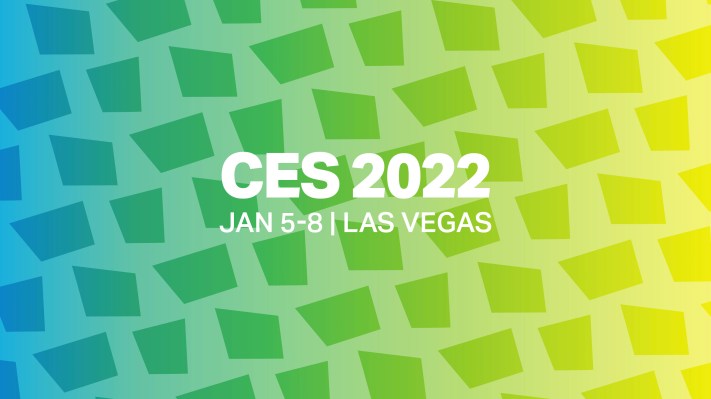I spent a chunk of yesterday morning rediscovering the big trends of CES 2012. It’s a strange experience, examining so much technology that feels — at once — extremely dated and very recent. With 10 years between you and an event, the macro trends really take shape. Some items are a clear part of a continuum that brings us to the present day. Even more often, however, these things prove to be a kind of evolutionary dead end.
Even so, there’s a lot we can learn in the moment. CES is billed as a bellwether for the year to come. It also demonstrates how the tech world responds to largely global trends, in a one-stop shop. And let’s be real, there’s really one key global trend from the past couple of years that’s going to drive what happens at the show in every way imaginable.
Over the past few weeks, we’ve received some pushback on our coverage of big-name drop-outs from the in-person portion of the event. To some degree, I understand — or at least can empathize with — the criticism of focusing coverage on COVID-fueled exits, rather than the manufacturer news tied to the event. To that I say, simply, we’ll be covering that, too, only we’ll be doing it next week when it’s actually announced at the show (albeit remotely).
In the lead up to the show, however, we can identify/predict the industry trends that are best poised to define CES — and, perhaps by extension, 2022.
First, the elephant in the room.
CES drop-outs
As I write this the list of big-name tech companies that have announced they will be opting out of (or dramatically scaling back from) in-person events includes: GM, Google, Microsoft, AMD, OnePlus, MSI, Lenovo, Intel, T-Mobile, AT&T, Meta, Twitter, Amazon, Proctor & Gamble, Mercedes, BMW, Panasonic, IBM, TikTok and Pinterest. The media side includes TechCrunch, Engadget, The Verge, CNET, PCMag, Tom’s Guide, Tech Radar and more.
It’s not exactly a full list — but it’s surely a lot more than the CTA hoped for. There are, however, still some big names participating, including Samsung, Sony, LG and Qualcomm. Given the late stage at which many companies opted out, those who attend the show are due for a surreal experience, full of big-name, unstaffed booths.
CES dodged the shutdown bullet in 2020 by the skin of its teeth. 2021, meanwhile, felt like a referendum on whether a hardware event at this scale can go entirely virtual. Based on our own experiences of navigating the show online, the answer was decidedly a no. With the CTA planning a return to an in-person event for 2022, I will be interested to see whether the organization has dramatically improved the experience for those who won’t be in Vegas.
Connected fitness
The last few years have been huge for this category — for what should be obvious reasons. Mirror was acquired by Lulu Lemon, Peloton had a banner couple of years (in spite of numerous setbacks) and the funding flowed for a range of different home fitness suppliers. This was fueled by widespread gym closures, coupled with the general inactivity of those forced to stay at home.
There’s been some regression for companies as gyms have reopened in different parts of the country and world, but with the arrival of troubling variants like delta and omicron, many have remained committed to their home workout routines.
Bonus: Expect more startups trying new wearable form factors, including rings, after Oura proved out success on that side. Mindfulness and sleep will also be focuses, in addition to more traditional health tracking.
Robots
As someone who writes a lot about robots, it’s heartening to see them playing an increasingly important role at CES. That includes moving beyond sheer novelty and tried and true form factors like robot vacuums. My list includes exoskeletons, elder tech, agtech, prosthesis and — at the very top — disinfecting robots. There are going to be a TON of these, driven by an increased focus on surface-based disease transmission during the pandemic and the fact that it’s reasonably simple to mount UV-C light panels to an autonomous robot that can take laps around an office.
Bonus: With last-mile delivery robots taking off in a big way, expect to see a number of newer companies getting in on the act during the show.
Lidar
Okay, so Velodyne has opted out of the in-person event, but between robotics, self-driving cars and drones (among others) the demand for lidar is massive. Expect to see a lot of new offers from companies at the show — both new and old.
Bonus: It’s going to be a big year for e-bikes, too. Mark my words.
Remote work
This one’s a bit nebulous, I confess, but the pandemic had a profound impact on the category. After years of decline, PC and tablet sales shot up, as people scrambled to build home offices. Even after nearly two years in isolation, there’s still a lot that needs improving with our home setups. If you started building solutions like webcams, lighting, conferencing devices and microphones at the beginning of the pandemic, CES 2022 would be a great place to debut them — for many reasons.
Bonus: For the (large number)th year in a row, smart home stuff will occupy a huge portion of mindshare for the show.
CES 2022 kicks off next week. We’ll be there (virtually), so stay tuned.

